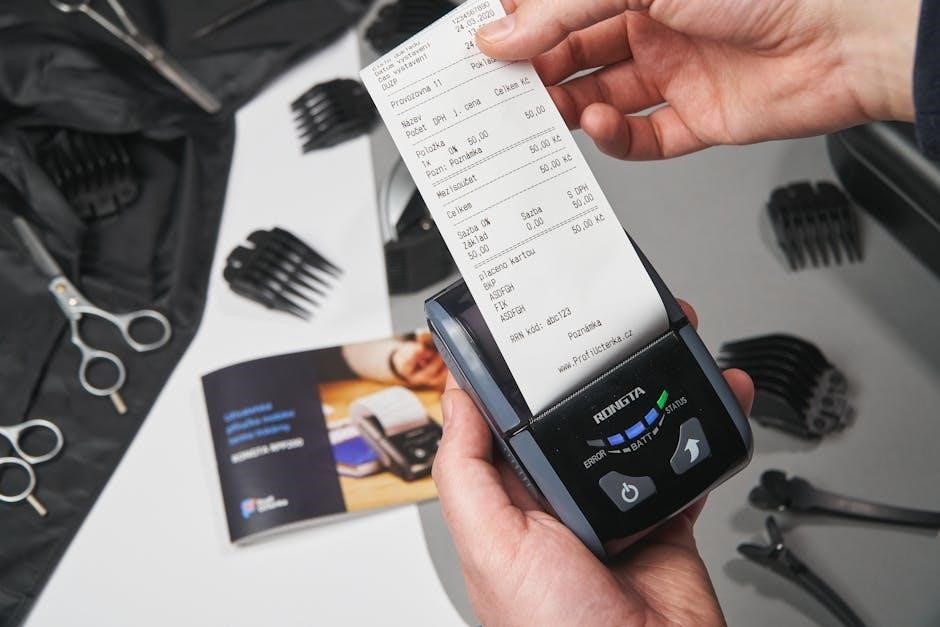Manual call points are essential devices in fire safety systems, enabling individuals to trigger alarms in emergency situations, ensuring timely alerts and evacuation, and protecting lives and property.
1.1 Definition and Purpose
Manual call points (MCPs) are devices that enable individuals to manually activate a fire alarm system, typically by pressing a button or pulling a lever. Their primary purpose is to provide a reliable means of raising an alarm in the event of a fire, ensuring timely evacuation and emergency response to protect lives and property.
1.2 Importance in Fire Safety Systems
Manual call points play a critical role in fire safety systems by enabling individuals to raise an alarm during emergencies. They ensure timely evacuation and emergency response, acting as the first line of defense against fire hazards. Their visibility and reliability make them indispensable in safeguarding lives and property, ensuring swift action in critical situations.

Types of Manual Call Points
Manual call points are categorized into addressable and non-addressable types. Addressable MCPs provide specific location identification, enhancing response accuracy, while non-addressable models offer basic activation. Wireless MCPs are also available, offering flexibility and ease of installation without compromising reliability.
2.1 Addressable Manual Call Points
Addressable manual call points (MCPs) are advanced devices that provide precise location identification when activated. They integrate seamlessly with modern fire detection systems, enabling quick response by pinpointing the exact trigger point. These devices enhance system intelligence, reduce false alarms, and offer real-time status updates. Their reliability and accuracy make them a critical component in comprehensive fire safety strategies for large facilities. Wireless addressable MCPs further improve installation flexibility and maintenance efficiency.
2.2 Non-Addressable Manual Call Points
Non-addressable manual call points are simpler devices that trigger a general fire alarm without identifying specific locations. They are cost-effective and suitable for smaller systems or basic fire safety needs. These devices are easy to install and maintain, providing reliable activation of fire alarms in emergency situations. They are widely used in applications where detailed location identification is not required, ensuring essential fire safety coverage.

Installation and Placement
Manual call points must be installed in visible, accessible locations, typically near exits, ensuring quick activation during emergencies for effective fire safety response.
3.1 Best Practices for Placement
Manual call points should be installed near exits, corridors, and assembly points for easy access. Ensure they are visible, unobstructed, and positioned at a height of approximately 1.2 to 1.5 meters for accessibility. Avoid placing them near obstacles or areas prone to vandalism. Proper placement enhances visibility and ensures quick activation during emergencies, adhering to fire safety standards and regulations.
3.2 Compliance with Fire Safety Regulations
Manual call points must comply with local fire safety regulations and standards, ensuring reliability and effectiveness. They should meet requirements for placement, accessibility, and visibility, adhering to guidelines set by fire safety authorities. Compliance ensures that devices function correctly during emergencies, providing critical alerts and contributing to overall fire safety. Regular inspections and maintenance are essential to uphold regulatory standards and ensure operational readiness.

Maintenance and Inspection

Regular inspection and maintenance of manual call points ensure proper functionality, addressing wear, tear, and potential issues promptly to guarantee reliable performance during emergencies.

4.1 Regular Inspection Requirements
Regular inspections of manual call points are crucial to ensure functionality. Checks include verifying button operation, wiring integrity, and proper installation. Inspection frequency complies with fire safety codes, ensuring devices remain operational and reliable in emergencies.
4.2 Troubleshooting Common Issues
Common issues with manual call points include wiring faults, tampering, or button damage. Troubleshooting involves checking connections, testing button functionality, and ensuring proper installation. Regular maintenance can prevent false alarms, while addressing issues promptly ensures reliable operation during emergencies, maintaining fire safety integrity and effectiveness.

Addressing False Alarms
False alarms from manual call points often result from accidental activation or tampering. Addressing these issues involves installing protective covers, ensuring proper placement, and regular maintenance.
5.1 Common Causes of False Alarms
False alarms in manual call points often occur due to accidental activation, tampering, or environmental factors like dust or humidity. Incorrect installation, poor maintenance, or vandalism can also trigger unwanted alarms, disrupting operations and reducing system credibility. Addressing these issues is crucial to ensure reliable fire safety responses and minimize unnecessary disruptions.
5.2 Strategies to Reduce False Alarms
To minimize false alarms, ensure proper installation, regular inspection, and maintenance of manual call points. Use protective covers to prevent accidental activation and train staff on correct usage. Implementing anti-tamper features and wireless monitoring systems can also enhance reliability. Addressing environmental factors like humidity and dust further reduces unwanted triggers, ensuring alarms are reserved for genuine emergencies only.

Integration with Fire Safety Systems
Manual call points seamlessly integrate with fire safety systems, ensuring alarms trigger quickly and effectively, enhancing overall safety by linking to detection and notification networks.
6.1 Compatibility with Modern Fire Detection Systems
Manual call points are designed to work seamlessly with modern fire detection systems, ensuring swift and reliable activation of alarms. They integrate effortlessly with addressable and non-addressable systems, providing clear communication and enhancing overall fire safety. Wireless models further simplify installation and compatibility, while smart features ensure they adapt to evolving fire safety technologies, maintaining peak performance and reliability in emergency situations.
6.2 Role in Comprehensive Fire Safety Plans
Manual call points play a critical role in comprehensive fire safety plans by providing an immediate and accessible means to trigger alarms during emergencies. Their simplicity ensures rapid response, aiding evacuation and minimizing risks. Integrated with detection systems, they serve as a vital link between human intervention and automated safety protocols, ensuring a coordinated emergency response to protect occupants and assets effectively.

Advanced Features and Technologies
Manual call points now feature wireless connectivity, smart sensors, and tamper monitoring, enhancing reliability and integration with modern fire safety systems for improved emergency responses.
7.1 Wireless Manual Call Points
Wireless manual call points offer enhanced flexibility and reliability in fire safety systems. They operate via battery power, eliminating the need for wiring, and feature tamper monitoring, providing alerts for low battery levels or unauthorized access. These devices integrate seamlessly with modern fire detection systems, ensuring rapid emergency response. Their wireless connectivity simplifies installation and maintenance, making them ideal for retrofitting or expanding existing fire safety infrastructure.
7.2 Smart Features for Enhanced Safety
Smart manual call points incorporate advanced technologies like real-time monitoring and automated diagnostics, ensuring optimal functionality. They integrate with building management systems, enabling centralized control and faster response times. Features such as automated testing and fault detection reduce maintenance efforts and enhance reliability. These innovations improve safety by minimizing false alarms and ensuring rapid emergency alerts, making them ideal for modern fire safety solutions.

Case Studies and Real-World Applications
Manual call points have proven effective in various settings, including offices, schools, and public venues, ensuring rapid emergency responses and enhancing fire safety protocols significantly.
8.1 Successful Implementation in Various Settings
Manual call points have been successfully installed in offices, schools, hospitals, and public venues, ensuring rapid emergency response. Their reliability in high-traffic areas, such as stadiums and shopping centers, highlights their effectiveness in diverse environments. Proper placement and maintenance ensure they function optimally, providing critical fire safety solutions across multiple industries and settings.
8.2 Lessons Learned from Emergency Scenarios
Emergency scenarios have highlighted the critical role of manual call points in timely evacuations and response. Lessons include the importance of reducing false alarms through proper maintenance and user education. Ensuring accessibility and clear signage for MCPs is vital, as delays in activation can worsen outcomes. Regular inspections and strategic placement are essential to maximize their effectiveness in real-life emergencies.
Manual call points remain crucial for fire safety, ensuring rapid response. Future trends include smart technologies and wireless solutions, enhancing reliability and integration in modern systems.
9.1 Summary of Key Points
Manual call points are vital components in fire safety, enabling swift alarm activation. They come in addressable and non-addressable types, requiring strategic placement and regular maintenance. Addressing false alarms is crucial for system reliability. Advances in wireless and smart technologies are enhancing their functionality, ensuring better integration with modern fire safety systems and improving overall safety standards in various settings.
9.2 Emerging Trends in Manual Call Point Technology
Emerging trends include wireless manual call points, offering flexibility and ease of installation. Smart features like remote monitoring and tamper detection enhance security. Integration with IoT enables real-time system monitoring, improving response times. Advanced addressable systems provide precise location identification, reducing false alarms. These innovations aim to enhance reliability, efficiency, and safety in fire detection systems, adapting to modern building requirements.